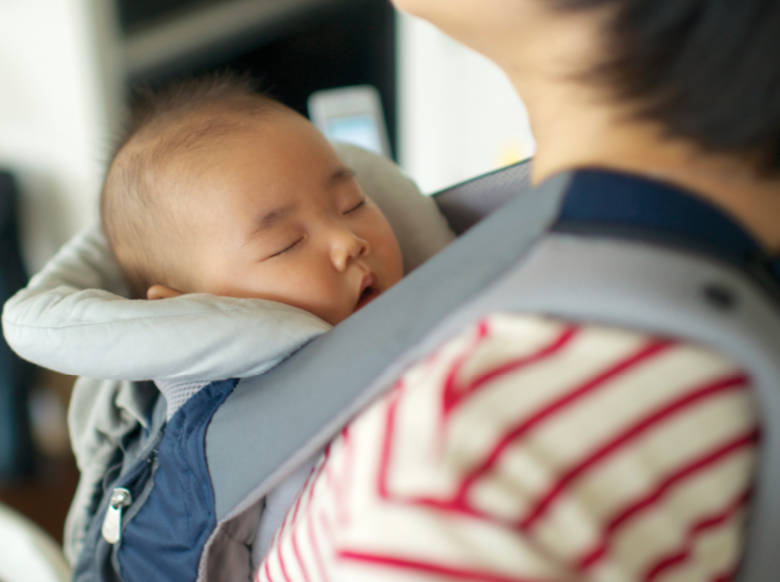
Tips For Safe Baby-Wearing
By Tara Phillips, RN, IBCLC, Boone Family Birthplace Nurse And Lactation Consultant
Baby-wearing is not only popular; it’s beneficial for your newborn. But with so many options out there, it can be hard to know which is best for wearing your baby. Before you buy a carrier, check out these tips!
Baby-wearing has been proven to decrease crying time, regulate your baby’s temperature, and improve bonding, especially with newborns. Skin-to-skin contact while baby-wearing can also increase a breastfeeding mother’s milk supply.
You can find a wide array of baby carriers, including soft wraps, ring slings, soft-structured and framed carriers. Before you buy, research! Read reviews of different carrier styles and brands. Be aware that different carriers have weight requirements and limits for safety reasons. Read the carrier instructions carefully before you wear your baby for the first time. If you have questions or concerns about safe carrying, ask your baby’s primary care provider first.
Whatever carrier you use, keeping your baby safe is your top priority.
To remember the guidelines for safe baby-wearing, think TICKS.
T-Tight
If you wear a wrap, make sure it’s tight enough to keep your baby secure and prevent falls. Your baby should be in proper alignment and in contact with you. However, you don’t want too tight a fit – you should still be able to slide your hand between your baby and the carrier.
I-In View
You should always be able to see your baby’s face while wearing a carrier. This lets you see your baby’s mood, check for breathing problems, and make eye contact with your child.
C-Close
When you wear your baby, they should be close enough that you can kiss the top of their head. If you can’t, move your baby or reposition the carrier. Some carriers include a newborn insert to set your baby at the correct height.
K-Keep Baby’s Chin Off Their Chest
Just like a car seat, proper alignment in a carrier is critical for your baby’s safety. Babies tend to tuck their chin if they don’t have the right support. When babies tuck their chin, it can block their airway and make it hard to breathe. You should be able to slide 2 fingers between your baby’s chin and chest at all times.
S-Support Your Back
While wearing a baby, your hips should carry most of the baby’s weight, with the rest distributed between your shoulders and hips. Also, your baby’s hips and knees should be bent to promote healthy joint development.